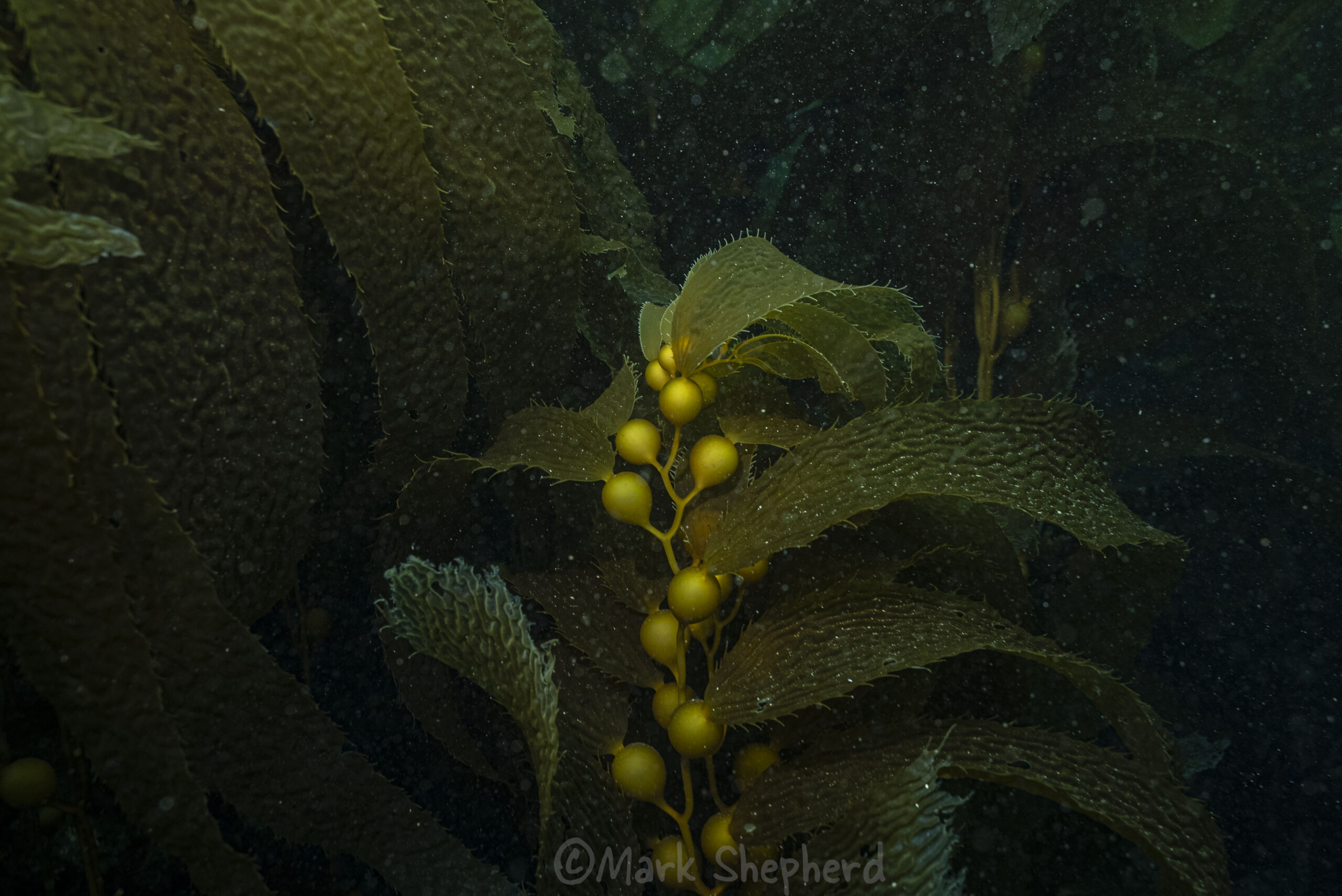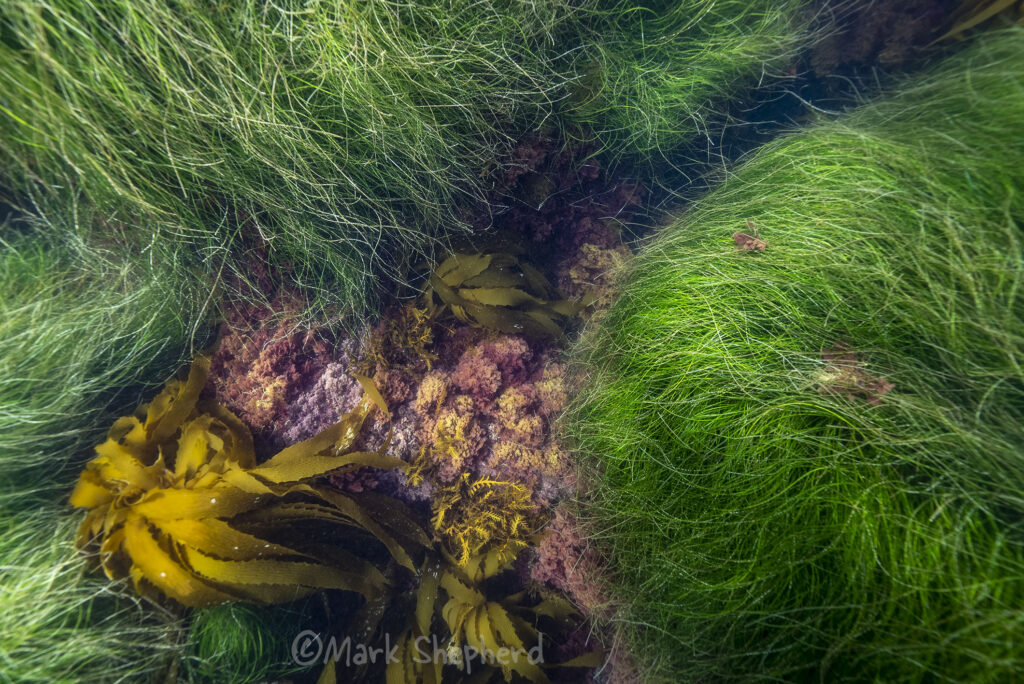
Only a few years ago (2013 – 2015) most of the kelp forests of Northern California disappeared. Ninety percent of these northern majestic forests were decimated by the purple sea urchins leaving a barren underwater landscape. Many fish and invertebrates that depend upon kelp to provide a habitat to hide from predators, reproduce, and find plenty of food, also disappeared.
Though we call them kelp forests, kelp is very different from plants. Kelp is a multicellular alga. They don’t have roots or stems that function to carry nutrients, but rather they have structures known as holdfasts that attach to bottom surface and stipes that support the blades. The blades do act similarly to leaves in that this is where most of the photosynthesis occurs.
The reason for the kelp losses was due to a surge in purple sea urchin populations. Sea urchin populations exploded when sunflower starfish, natural urchin predators, began dying from sea star wasting disease. Purple sea urchins feed on kelp, among other things, and the large populations of hungry urchins decimated the forests. One of the ways purple sea urchins reduce kelp forests is by feeding on the base of the kelp that is attached to the rocks and substrates near the bottom of the ocean. By feeding on the base, the kelp becomes detached from the bottom and freely float away.

Another reason for kelp loss is ocean warming from climate change. Kelp grows only in cold water between 6 and 14 °C (43 and 57 °F). Such conditions are found along the eastern Pacific cost from Mexico to Alaska. In years where El Nino conditions prevails, cold nutrient-rich water that normally rises from the deep ocean, is reduced. As a result, coastal water temperatures rise and the rich food supply dwindles. Such rising temperatures dramatically affect the most common kelp species: giant and bull kelp. Red abalone, which also feed on kelp starved, also disappeared from much of the underwater landscape.
During 2020, kelp forests reappeared in many areas with high losses. And because kelp can grow as quickly as 3 to 5 inches a day, there is a great deal of hope that forests may reach their former coverage. Already, some of the northern areas are crisscrossed with tangles of thick growth.

Within the kelp forest, there are hideaways harboring sea grass. Sea grasses, unlike kelp, are flowering plants. Similar to land plants, sea grass have specialized tissues like stems, leaves, roots, and flowers.
